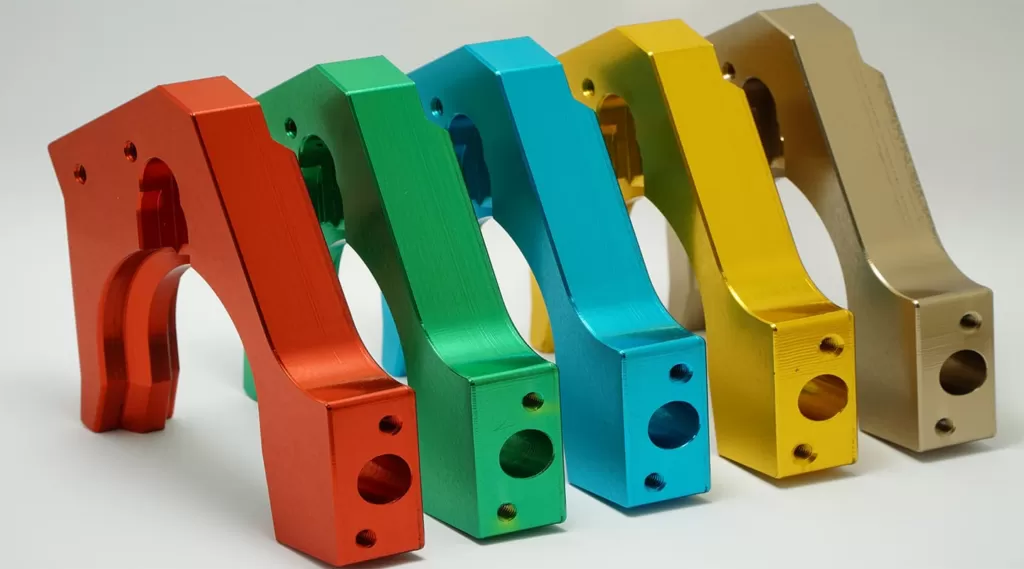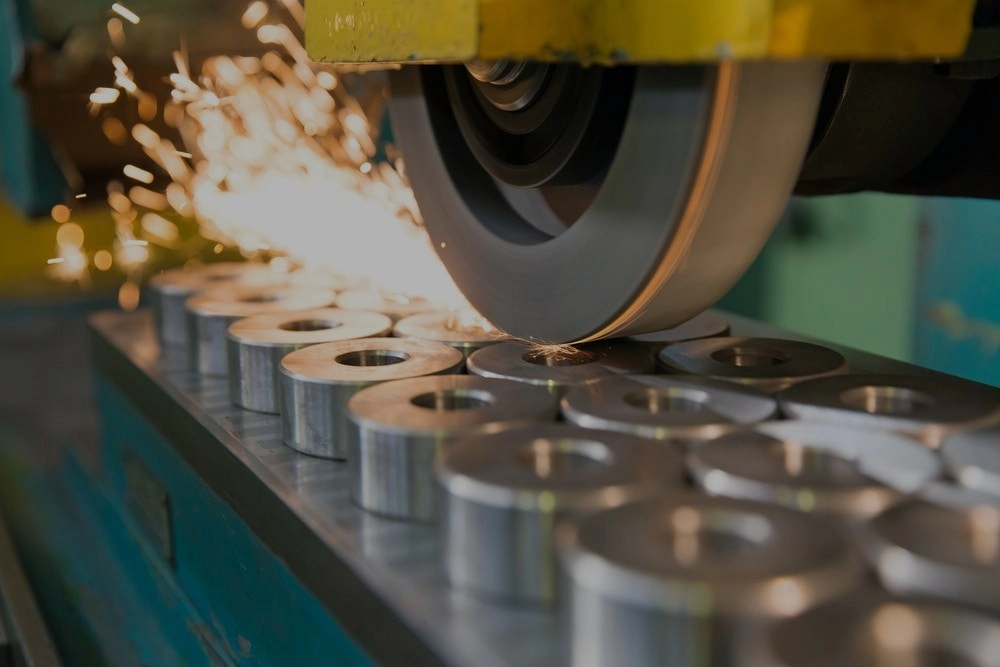What is the Plating Process in CNC Machining
Plating process is a popular surface finishing technique used to coat a metal or plastic part with a thin layer of another metal. This metal coating enhances the part’s properties such as durability, corrosion resistance, and appearance. In CNC machining, plating plays a crucial role because it protects precision components and improves performance without altering the part’s dimensions significantly.
How the Plating Process Works
There are two main ways plating works in CNC machining:
Electrochemical deposition (Electroplating)
This method uses an electric current to deposit metal ions from a solution onto the part’s surface. It’s highly controlled and widely used for metals like nickel, chrome, and zinc.
Electroless plating
Unlike electroplating, electroless plating doesn’t rely on electricity. Instead, it’s a chemical process that deposits a uniform metal coating on all surfaces, even complex shapes and hidden areas.
Why Plating Matters for CNC Machining
Plating is important in CNC machining for several reasons:
- Corrosion resistance – A plated surface protects metals from rust and environmental damage, extending part life.
- Wear resistance – Metal coatings increase hardness and reduce wear on moving parts.
- Aesthetics – Plating improves the visual appeal with shiny finishes like chrome or nickel, perfect for visible automotive or decorative parts.
In short, the plating process in CNC machining enhances part longevity, boosts performance, and ensures the precision parts meet demanding industrial requirements.
Types of Plating Processes in CNC Machining
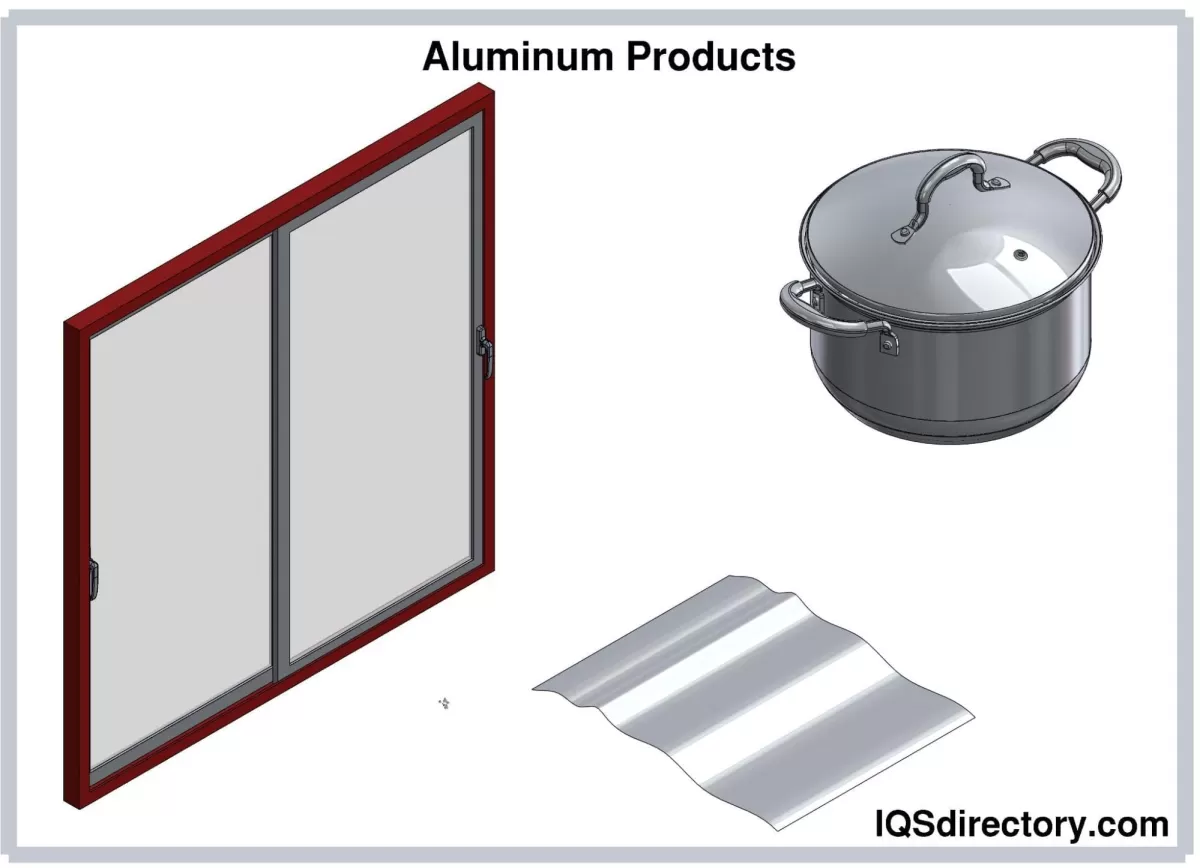
When it comes to plating processes for CNC machining, there are a few main options, each with its own benefits and common uses.
Electroplating Process
Electroplating uses an electric current to deposit a thin layer of metal onto the surface of a part. This method is widely used because it creates a strong bond and a smooth finish. The electric current causes metal ions in a solution to move and attach to the CNC part’s surface.
Common metals used in electroplating include:
- Nickel – known for corrosion resistance and hardness
- Chrome – adds shine and protects against wear
- Zinc – often used for rust prevention
Electroplated parts are common in areas like automotive components, tools, and hardware where durability and aesthetics are key.
Electroless Plating
Unlike electroplating, electroless plating doesn’t rely on an electric current. Instead, it uses a chemical reaction to deposit metal evenly over the entire piece. This makes it perfect for parts with complex shapes that electric current might miss.
Benefits of electroless plating:
- Provides a uniform coating regardless of part shape
- Great for intricate CNC parts with hard-to-reach areas
This type of plating is often chosen for electronics, where precise and reliable coatings are essential, and in the aerospace industry for lightweight, corrosion-resistant components.
Other Plating Methods
Besides electroplating and electroless plating, there are other surface finishing techniques like:
- Hot dip galvanizing – dipping parts into molten zinc for heavy-duty corrosion protection
- Physical vapor deposition (PVD) – a high-tech method that applies thin, hard coatings by vaporizing metal in a vacuum
Each method offers unique advantages depending on the application, material, and performance requirements.
Whether you need plating for automotive parts, aerospace components, or electronics, understanding these types helps you choose the best surface finish for your CNC projects.
Benefits of the Plating Process in CNC Machining
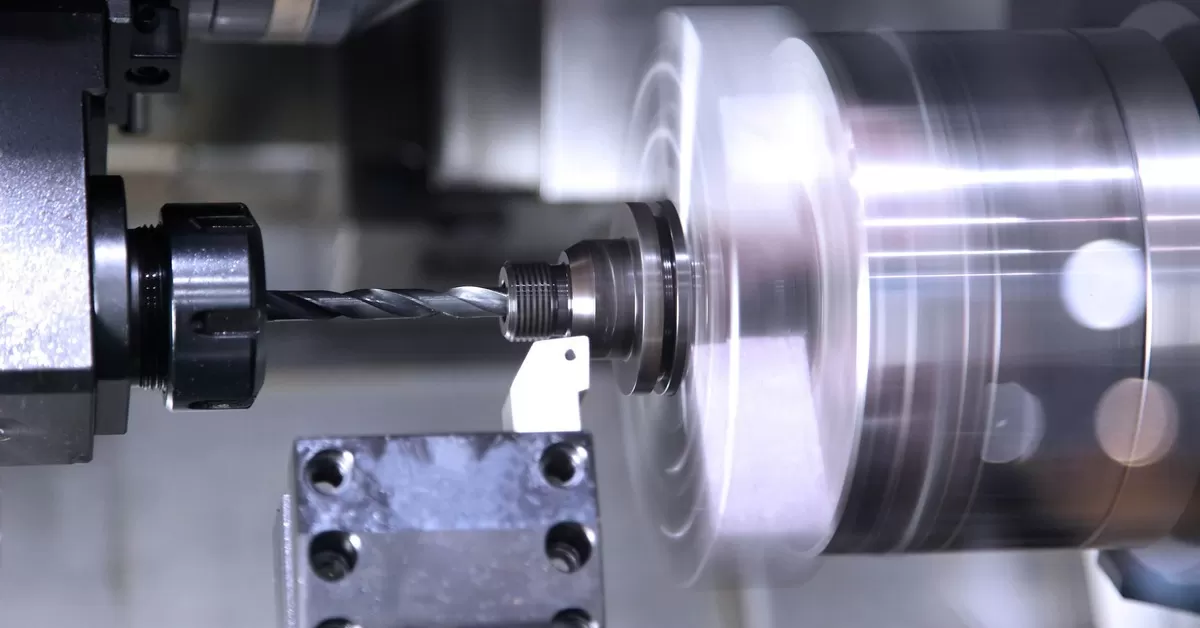
Using a plating process in CNC machining offers several strong benefits that many industries, including aerospace and automotive, rely on to get the best results.
Enhanced Durability and Corrosion Resistance
One of the biggest advantages is improved durability. Plating adds a protective metal layer that shields parts from rust and corrosion. This is especially important for CNC parts exposed to harsh environments or moisture, helping them last longer and perform better over time.
Improved Aesthetic Appeal
Surface finishing through plating also boosts the visual appeal of parts. Whether it’s chrome plating for a sleek automotive trim or nickel plating on precision tools, the plating process gives parts a smooth, shiny finish that looks professional and high quality.
Increased Wear Resistance for High Performance Parts
Plating significantly increases wear resistance, which is critical for high-performance CNC components in industries like aerospace. Parts coated with metals like nickel or chromium resist scratching, abrasion, and surface damage, maintaining their integrity under tough working conditions.
Cost Effectiveness Extending Part Lifespan
Adding a plated coating often reduces the need for frequent replacements, making it more cost-effective in the long run. By extending the lifespan of CNC machined parts, plating lowers maintenance costs and downtime for your operations.
Advantages for Industries Served by HYCNC Precision Aerospace Parts
At HYCNC, we work with aerospace clients who demand precision plating services that meet strict industry standards. Our plating process helps deliver parts that are lightweight yet corrosion-resistant, ensuring safety and reliability in aircraft components.
In , the plating process in CNC machining provides unbeatable protection, a great look, and boosts performance — all essential for industries that depend on durable, high-quality metal parts.
Applications of Plating in CNC Machining
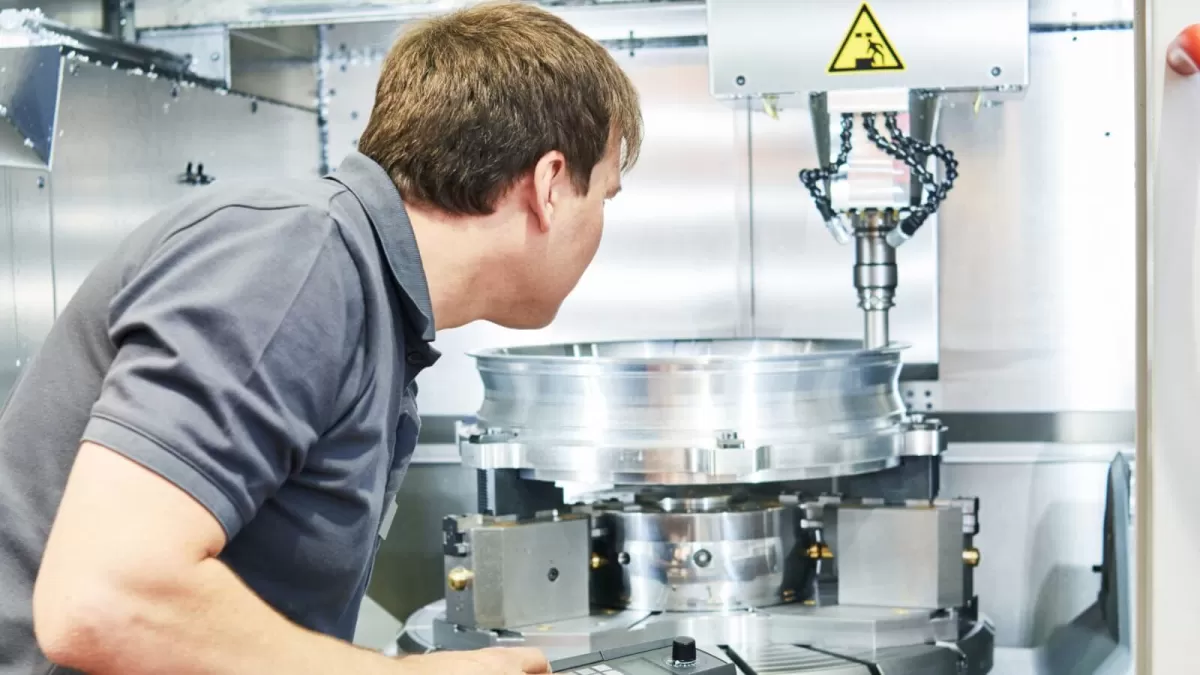
Plating plays a crucial role in improving CNC machined parts across several industries. Here’s where plating really makes a difference:
Automotive Parts
In the automotive sector, plated CNC parts like engine components, chassis parts, and decorative trim gain better corrosion resistance and durability. Nickel and chrome plating are common for enhancing both strength and appearance.
Aerospace Components
For aerospace, plating offers lightweight, corrosion-resistant coatings on critical aircraft parts. This helps ensure safety and performance while keeping parts durable against harsh environments.
Electronics
Plating is essential for conductive coatings on circuit boards and connectors. Electroless plating is often used here to provide uniform metal layers that improve conductivity and protect sensitive electronic parts.
Medical Tools and Implants
In medical applications, CNC machined surgical tools and implants get biocompatible plating, improving wear resistance and ensuring safety inside the human body. Stainless steel with special coatings or gold plating are typical choices.
Real World HYCNC Plating Examples
At HYCNC, we have helped clients in precision machining achieve excellent results through tailored plating solutions. From automotive engine parts with nickel plating to aerospace components with corrosion-resistant finishes, our plating process adds real value by extending part life and performance.
By choosing the right plating method, your CNC parts can outperform expectations in tough conditions while looking great.
The Plating Process Step by Step for CNC Machining

When it comes to plating CNC parts, following a precise process is key to ensuring durability and a quality surface finish. Here’s how HYCNC handles plating with attention to every detail:
Surface Preparation Cleaning and Degreasing
The first step is thorough cleaning. All oil, dirt, and grease are removed from the CNC parts. This is crucial because any contamination can cause plating defects like poor adhesion or uneven coating. We use industrial-grade cleaners and degreasers to ensure the surface is spotless.
Pre Treatment Etching and Polishing
Next comes pre-treatment, which helps the metal surface get ready for plating. This involves:
- Etching: Lightly roughening the surface to improve metal bonding.
- Polishing: Smoothing out any imperfections for a cleaner, shinier finish.
These steps enhance the plating’s strength and uniformity, especially important for precision CNC components.
Plating Application Electrochemical and Chemical Deposition
The actual plating can be done by:
- Electroplating: Using an electric current to deposit metal ions like nickel, chrome, or zinc onto the part.
- Electroless plating: A chemical process that deposits metal without electricity, great for complex shapes with uniform coating.
At HYCNC, we choose the method that fits your part’s material and the performance requirements.
Post Treatment Polishing and Quality Checks
After plating, parts undergo a final polishing to achieve the desired surface smoothness and appearance. Then, we perform quality inspections that may include:
- Thickness measurement of the plating layer
- Adhesion tests
- Visual checks for uniformity and defects
This ensures every part meets high standards before delivery.
HYCNC Quality Assurance and Precision
At HYCNC, quality assurance is built into every stage of the plating process. Our highly skilled team uses state-of-the-art equipment to maintain consistency, precision, and durability in every plating job. We understand the local customer expectations for reliable and cost-effective CNC machining plating services, and we deliver on that promise.
Choosing the Right Plating Process for Your CNC Project
Picking the best plating process for your CNC machining job depends on a few key factors. Here’s what you should keep in mind:
Material Type and Compatibility
- Base metal matters a lot. Some plating methods work better on specific metals like steel, aluminum, or copper alloys.
- Consider how the plating will bond with your part to avoid flaking or uneven coating.
Application and Environment
- Think about where and how the part will be used. Is it exposed to harsh weather, chemicals, or heavy wear?
- For outdoor or corrosive environments, corrosion-resistant plating like zinc or nickel might be best.
Budget and Volume
- Some plating processes cost more upfront but extend part life, becoming cost-effective over time.
- For large production runs, electroplating often offers faster throughput, while electroless plating suits smaller batches or complex parts.
Electroplating vs Electroless Plating
- Electroplating uses an electric current to deposit metals; it’s great for thicker, more uniform coatings on simpler shapes.
- Electroless plating relies on chemical deposition, providing even coverage on intricate or hard-to-reach CNC parts without electric current. It’s especially good for electronics or aerospace parts needing precise coatings.
How HYCNC Helps Customize Your Plating
At HYCNC, we understand every project is different. That’s why we offer:
- Tailored plating solutions based on your material, part usage, and budget.
- Expert consultation to help you decide whether electroplating, electroless plating, or other methods fit your needs best.
- Precision plating services ensuring consistent coating quality for your CNC machined parts.
Choosing the right plating method is critical for durability, appearance, and performance. Reach out to us for a custom plating consultation to get the best finish for your project.
For more on metal coatings and surface finishes, check out our deep dive into nickel plating and zinc plating vs nickel plating.
Local SEO Finding Plating Services Near You
When it comes to plating process services, choosing a local provider can save you time and money. Local plating companies offer cost-effective solutions with quicker turnaround times, making sure your CNC projects stay on schedule without extra shipping delays.
Why Local Plating Providers Matter
- Faster delivery and communication: Being nearby means you can easily discuss your project needs and get updates in real time.
- Lower shipping costs: Local services reduce transport expenses, keeping your overall CNC machining and plating budget in check.
- Better service customization: Local providers understand regional industry demands, whether it’s automotive, aerospace, or electronics plating.
HYCNC Service Areas
Here at HYCNC, we proudly serve multiple cities and regions across the United States. Whether you need nickel plating, zinc plating, or other metal coating techniques, our precision plating services are available in your local area. This includes major industrial hubs and nearby communities, so you can access reliable plating without waiting.
Tips for Finding Plating Services Near You
To find the best plating services close to your facility or workshop, try these simple tips:
- Use city name + plating services near me in Google search.
- Include specific plating methods like electroplating or electroless plating with your city name for targeted results.
- Check local business directories and reviews to gauge service quality and turnaround times.
- Reach out to CNC service providers who offer plating or surface finishing CNC options — they often partner with trusted plating vendors.
If you’re looking for more info on nickel plating, zinc plating, or other plating related CNC machining services, check out our detailed guides on nickel plating and comparisons like zinc plating vs nickel plating to understand which fits your project best.
Choosing a local plating provider like HYCNC means you get high-quality, precise plating with fast service right where you need it.
FAQs About the Plating Process in CNC Machining
What is the difference between electroplating and electroless plating
- Electroplating uses an electric current to deposit a metal layer onto the CNC part. The metal ions are attracted to the surface by the current, creating a precise coating.
- Electroless plating does not require electricity. Instead, it relies on a chemical reaction to deposit an even metal layer. This makes it great for complex CNC parts that need uniform coverage.
How long does the plating process take
- The duration varies depending on factors like the type of plating, metal used, and part size.
- Electroplating usually takes from a few minutes up to several hours.
- Electroless plating can take a bit longer but ensures consistent thickness across detailed surfaces.
- Overall, HYCNC works efficiently to meet project timelines without sacrificing quality.
Which materials are suitable for CNC plating
- Most metals and plastics commonly used in CNC machining can be plated.
- Popular substrates include steel, aluminum, brass, copper, and certain plastics.
- The plating metal choices at HYCNC include nickel, chrome, zinc, among others, tailored to your part needs.
- Proper surface preparation is key to ensure the coating adheres well and lasts.
How does HYCNC ensure plating quality
- We follow strict surface preparation steps like thorough cleaning and etching before plating.
- Use state-of-the-art plating equipment for precise control.
- Perform post-plating inspections for coating thickness, adhesion, and appearance.
- Custom solutions and consultation ensure the right plating process matches your project’s performance and durability needs.
If you want to learn more about specific plating types like nickel plating, check out our nickel plating services for detailed info.


